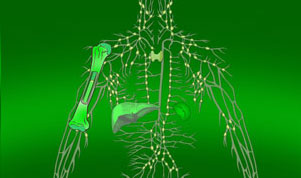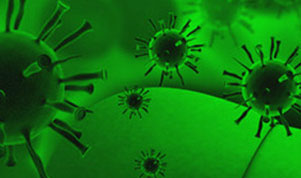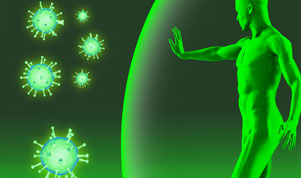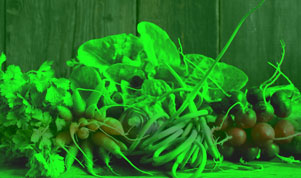Autumn Epidemic
Canadian doctors Malcolm Sears and Neil Johnston analyzed the nature of autumn epidemics of asthma exacerbations over the years 1990 to 2004. They found that every year in September, the number of hospitalizations of children due to exacerbations of bronchial asthma increases sharply. This occurred as a result of a very large increase in viral respiratory infections.
Therefore, it is worth taking care of your child's immunity before a serious infection occurs! The first years of kindergarten and school are particularly vulnerable.
You can read more on our website → Autumn Epidemic
Foods that help boost your immune system
1. Products rich in vitamin C
These fruits with a record content of vitamin C are not usually consumed directly, but are used in industry as a natural source of vitamin C. They include (1) the Amazonian camu camu berry, (2) the acerola fruit (Barbados cherry), (3) the dogwood fruit, (4) amalaki (Indian goose berry), (5) açai berries.
Below are our popular fruits and vegetables that are a rich source of vitamin C.
- Peppers (especially red and yellow)
- Broccoli, Brussels sprouts
- Kiwi
- Oranges and other citrus fruits
- Rose hips
- Black currant
- Parsley leaves
2. Garlic
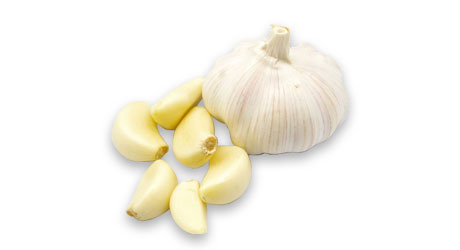
Garlic has been associated with unique health properties for centuries. Garlic also repelled "evil forces". Today, garlic is known as a "superfood", i.e. a food with unique health properties. Super food is always food of natural origin that is not processed. It is a food rich in nutrients. The content of vitamins, minerals and antioxidants in them is usually several times higher than in ordinary products. Garlic has a very characteristic, intense taste and smell that is shared by people who eat it. For this reason, many people, even if they like it, avoid eating garlic on a daily basis.
Garlic has been used for centuries both in cooking and in medicine. It has the most beneficial properties when eaten raw. When boiled, baked or stewed, it loses some of its antibacterial properties, although it still has good antifungal and antioxidant properties. When we cut or crush it, one of its most valuable ingredients - allin (a sulfur compound) is transformed into allicin, revealing a characteristic, intense smell. Garlic is one of the plants that naturally strengthens the immune system. This involves activating white blood cells (leukocytes) to defend against germs. Therefore, when the first symptoms of a cold or cough appear, it is good to use garlic because it has antiseptic, expectorant and diaphoretic properties. It acts as a natural antibiotic: it fights pathogenic bacteria in the respiratory and digestive systems.
3. Chicken stock* (broth)
Our grandmothers knew this well. In the past, when someone in the family was sick, our grandmothers and great-grandmothers cooked "strong" broth. Scientifically, it is not very clear how and why, but the broth undoubtedly quickly and effectively strengthened the patient and accelerated healing and convalescence.
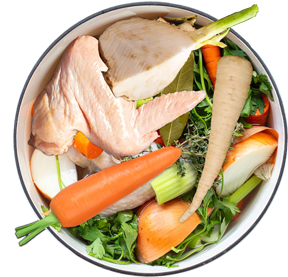
Broth is the basic and most popular dish in many families. Real home-made broth, as our grandmothers said, was a clear, aromatic, rather fatty soup. This is how broth was once cooked. Today it has changed a bit and the broth has become a slightly lighter dish. However, this does not mean that it is less tasty. It certainly warms you up perfectly on cold days. Get to know our broth recipe and see how to prepare a perfect-tasting and non-greasy broth for a small child. For the broth, you should use poultry from an organic chicken farm, or even better, from a free-range young rooster. Vegan broth, which is a vegetable broth, will not work here.
Chicken stock – recipe
Ingredients
It is best to cook chicken broth from lean meat (you can also cook turkey broth or combine both types of meat). When choosing meat for broth, it is best to choose poultry meat without skin (it contains the most fat and cholesterol): poultry wings, turkey wing, chicken or turkey breast. Vegetables give it a characteristic aroma. The basic set is: 3–4 carrots, 1–2 parsley, piece of celery root, a piece of leek, a few sprigs of parsley (some people also add a quarter of savoy cabbage, but this is not necessary). You need to add more vegetables to a larger portion of soup to make the broth more aromatic.
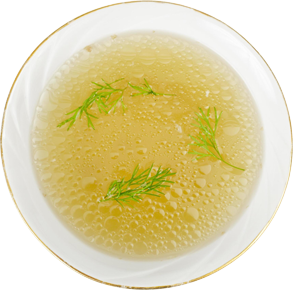
Instructions
Cooking good broth is not difficult at all. Pour cold water over the washed meat for the broth, add a bay leaf, a few grains of allspice and pepper, lightly salt it and heat it up. Just before boiling, reduce the heat so that the broth does not boil, otherwise scum (particles of curdled protein) will form. The broth should only slowly bubbles. If scum appears, but only a small amount, there is no need to do anything - it will sink to the bottom on its own. If there are a lot of them, you need to use a large spoon to remove the scum that is formed from the curdling protein and collects on the surface of the water. This is important because if the water boils with the scum, the broth will be cloudy and not clear. After boiling, add the peeled and rinsed vegetables to the pot and bring the water to a boil again. Then reduce the heat so that the water boils very slowly, cover the pot. How long to cook the broth? At least 45-60 minutes. When the broth is ready, remove the vegetables except the carrots and cut the meat into pieces - you can serve them in the broth or make meatballs for children or stuffing for dumplings. Serve the broth with noodles, sprinkle with parsley.
4. Foods containing probiotic bacteria
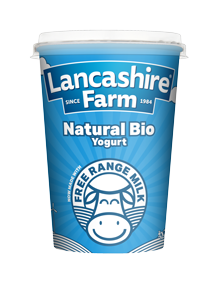
Yogurt, together with sour milk and buttermilk, belongs to the so-called probiotic food. Probiotic food means food products containing specially selected strains of live lactic acid bacteria cells, i.e. probiotics (from the Greek "pro bios" - "for life"), which have the ability to colonize the human digestive tract. They are present in the product through fermentation or are added to it. (e.g. Bifido-bacterium and Lactobacillus). According to the WHO definition, probiotics are "live microorganisms that, when administered in appropriate amounts, have a beneficial effect on the health of the host." They have scientifically proven beneficial health properties for humans. Their main action is to have a beneficial effect on the microflora of the digestive system.
Until recently, according to dairy companies, special bacteria added to probiotic food (yogurts) were supposed to protect us against all kinds of diseases – from colds to cancer. Activia, Actimel, Vitality, Elmlea, Yacult, Bio-yoghurt – Activia, Actimel, Vitality, Elmlea, Yacult, Bio-yoghurt - these are examples of probiotic products that can be purchased in grocery stores. People buy them because they think that if they drink them they will get sick less often, but that's not entirely true. On the other hand, our immunity largely "comes" from the digestive tract. A healthy and efficient digestive system is essential for properly strengthening the immune system. Proper gastrointestinal microflora is essential in this case. It would be worth enriching probiotic dairy products with an additional portion of fruit.
- Yoghurt, kefir, buttermilk
- Sauerkraut, kimczi – Korean sauerkraut
- Worcestershire sauce, fish sauce, oyster sauce.
- Miso paste and miso soup (kind of fermented soy sauce)
- kombucha (fermented tea)
5. Green and other herbal teas
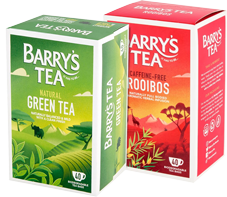
Not only green tea, but also ginger tea, ginseng root tea and rooibos tea have a beneficial effect on the immune system. Not only green tea, but also ginger tea and ginseng root tea have a beneficial effect on the immune system. Green tea is not only recommended as one of the best teas for weight loss, but it is also an excellent remedy for fighting the common cold. Zawiera flawonoidy*, antyoksydanty które wspomagają odporność i wykazują właściwości przeciwzapalne. W niedawno opublikowanej pracy w magazynie Biochem Pharmacol. 2011 December 15; 82(12): 1807–1821 wykazano, że katechina – antyoksydant obficie występujący w zielonej herbacie, wykazuje istotne właściwości przeciwbakteryjne i przeciwwirusowe i może zwalczać bakterie wywołujące chorobę przeziębieniową oraz wirusy grypy. Dodatkowe innformacje → Community herbal monograph on Camellia sinensis – European Medicines Agency.
*Flawonoidy (czyli związki flawonowe) to grupa organicznych związków chemicznych występujących w roślinach, spełniających funkcję barwników, przeciwutleniaczy i naturalnych insektycydów oraz fungicydów, chroniących rośliny przed atakiem ze strony owadów i grzybów. Większość z nich jest barwnikami zgromadzonymi w powierzchniowych warstwach tkanek roślinnych, nadając intensywny kolor i ograniczając szkodliwy wpływ promieniowania ultrafioletowego.
6. Yeast
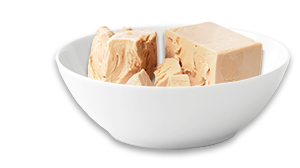
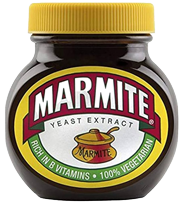
Drożdże mają dużą wartość odżywczą, co w umiejętny sposób może być wykorzystane w leczeniu i profilaktyce wielu chorób. Dzięki zawartości dużych ilości i łatwo przyswajalnych składników budulcowych, energetycznych i regulujących drożdże wykazują wpływ ogólnie wzmacniający, mobilizujący procesy regeneracji, kompensacji i odporności; przywracają odpowiednią mikroflorę jelitową, wybitnie oddziałują na czynności skóry i jej wytworów: paznokci i włosów. Z drożdży pozyskiwany jest beta-glukan, który posiada właściwości prebiotyczne i stymulujące perystaltykę przewodu pokarmowego. Przypisywane są mu również właściwości immunostymulujące za pośrednictwem aktywowania makrofagów. Poza tym drożdże to bardzo bogate i cenne naturalne źródło wielu witamin (zwłaszcza z grupy B) oraz mikroelementów – szczególnie selenu, pierwiastka niezwykle ważnego dla ochrony przed wolnymi rodnikami i dla procesów odpornościowych.
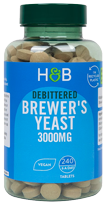
There are many ready-made preparations containing yeast available on the market. Most of them, however, are brewer's yeast, which may be different from baker's yeast. Baker's yeast Lat. Saccharomyces cerevisiae are used in baking and the production of top-fermented beer. Brewer's yeast Lat. Saccharomyces pastorianus are used in the production of bottom-fermented type lager beer.
Marmite yeast marmalade is popular in the UK. It has a very specific salty taste and not everyone will want to use it, but if someone likes it, they will like it very much and forever.
However, ordinary baker's yeast has the best immunomodulatory properties. Below is the recipe on how to prepare them.
Yeast decoction – preparation method:
● Dissolve 1/4 cube of yeast in boiling water.
● Add hot milk and optionally bitter cocoa or coffee.
● Cover the drink with a plate and set aside to cool.
● Do not add sugar, honey, fruit juice, etc. They weaken the activity of the yeast
7. Spirulina
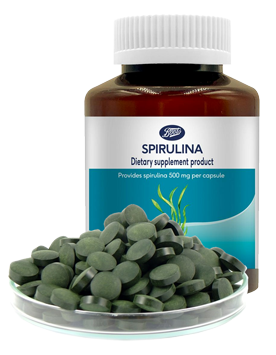
Spirulina belongs to the so-called "super food", i.e. organic food with particularly rich properties. The cyanobacteria Arthrospira platensis and Arthrospira maxima from which spirulina is produced should be grown and harvested in accordance with Good Agricultural Practice standards. This applies primarily to the purity of the water in which algae grow. Spirulina is the trade name of concentrated and freeze-dried cyanobacteria Arthrospira platensis. Cyanobacteria can be cultured in seawater or freshwater. The main difference in spirulina obtained from cyanobacteria grown in seawater is the high iodine content and such spirulina is not recommended for hyperthyroidism.
Algi Arthrospira platensis, należące do gromady sinic, były od stuleci stosowane jako suplement diety w wielu krajach świata, ze względu na ich wyjątkowe wartości odżywcze, między innymi wysoką zawartość białka (ok. 50 – 70%), wielu witamin (A, B1, B2, B6, B12, kwas foliowy, nikotynamid, C, D, E, K), minerałów (potas, wapń, magnez, żelazo, chrom, miedź, selen, cynk) oraz zawartość nienasyconych kwasów tłuszczowych, w tym bardzo cenny GLA (kwas gamma linolenowy).
Tradycyjnie spożywa się ok. 15 gramów alg dziennie. Taka ilość, zawartych w algach składników odżywczych, jest również właściwa dla współczesnego człowieka i dlatego opracowano spirulinę – preparat skoncentrowany w postaci proszku lub tabletek, który spożywa się w ilości 2 - 5 gramów dziennie, najlepiej w 2 - 3 dawkach w ciągu dnia.
Super koktajl ze spiruliną:
Czas przygotowania: do 30 minut;
Składniki na 2 szklanki: 2 banany, pół jabłka, sok z jednej dużej pomarańczy, 1 liść jarmużu, drobno posiekany, można zamienić na łyżkę pietruszki, 1 łyżeczka sproszkowanej spiruliny o sprawdzonej jakości.
Przygotowanie: wszystkie składniki zmiksować w naczyniu blendera, rozlać do dwóch szklanek i wypić od razu.
8. Products rich in vitamin D

Witamina D3 (cholekalcyferol) pełni w naszym organizmie wiele ważnych funkcji. Uważa się, że jest ona hormonem sterolowym, który przechodzi do formy aktywnej w wyniku hydroksylacji w pozycji 1 i 25 czyli do 1α,25-dihydroksycholekalcyferolu. Wit. D odgrywa istotną rolę w regulacji gospodarki wapniowo-fosforanowej ustroju, jest konieczna do prawidłowego wchłaniania wapnia i fosforanów w przewodzie pokarmowym, zwiększa ich wchłanianie w obrębie nerek oraz do rozwoju i mineralizacji kości. Ułatwia zamianę fosforu organicznego w postać nieorganiczną, a także powstawanie połączeń wapnia i fosforu niezbędnych do tworzenia kości. W kościach zwiększa osteolizę osteoklastyczną.
Ma działanie immunomodulujące i pośrednio przeciwbakteryjne. Witamina D aktywuje geny kodujące peptydy przeciwbakteryjne (o cechach naturalnych antybiotyków), katelicydynę i β-defensynę 2. Katelicydyna wykazuje aktywność biologiczną przeciw wielu bakteriom, w tym bakteriom gruźlicy, co może tłumaczyć skuteczność „słonecznej kuracji” zalecanej w XIX wieku w leczeniu tej choroby. Katelicydyna jest produkowana przez komórki odpornościowe przy zetknięciu ze ścianami komórkowymi bakterii, w obecności formy 25D witaminy D.
We are particularly vulnerable to vitamin D3 deficiency in the winter season, especially small children and people with dietary restrictions.
- Cod-liver-oil
- Sea fish, especially mackerel, salmon, sardine
- Milk and dairy products (cottage cheese)
- Eggs
- Yeast– źródło ergosterolu, z którego powstaje ergokalcyferol, czyli witamina D2
- NWe must not forget about the sun!
9. Ginger
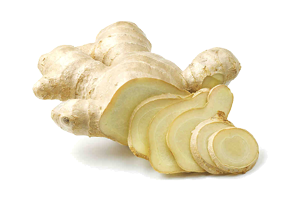
Imbir (łac. Zingiber officinale Rosc) jest rośliną uprawną pochodzącą z terenów Azji południowo-wschodniej. Charakteryzuje się bulwiastym kłączem, często mocno rozgałęzionym i powyginanym. Skórka imbiru jest beżowo-szara, jednak w przekroju roślina ta jest barwy bladożółtej. Ma charakterystyczny, ostry smak i silny, korzenny aromat. Imbir uprawia się przede wszystkim w Chinach, Japonii i Indiach.
Korzeń imbiru ma właściwości przeciwzapalne, przeciwwirusowe i przeciwbakteryjne. Co ciekawe, takiego działania nie posiada imbir w formie sproszkowanej. Stosując więc imbir na przeziębienie, warto używać tego świeżego.
10. Miód, mleczko pszczele mleczko i kit pszczeli (propolis)

Miód ma bardzo wiele właściwości, m.in. antybakteryjne, regenerujące czy nawet lecznicze. Miody dzielimy ze względu na rodzaj surowca, z którego powstały: kwiatowe oraz spadziowe. Każdy rodzaj miodu jest dobry na inny rodzaj schorzenia np. miód lipowy pomaga na choroby górnych dróg oddechowych, kaszel, chrypkę, stany podenerwowania oraz choroby serca i układu krążenia. Ma działanie rozgrzewające, należy jednak pamiętać, że jego smak jest nieco ostry z lekką goryczką, dlatego podawajmy go dzieciom z chlebem. Miód rzepakowy pomaga na zapalenie gardła i katar. Miód wielokwiatowy jest łagodny w smaku, a zażywany regularnie łagodzi objawy wiosennych alergii. Miody spadziowe (przeważnie z jodły i świerka) są prawie czarne, w smaku są dosyć ostro słodkie, mają zapach lekko żywiczny, korzenny, czasem nawet lekko kwaśny. Dzieci mogą je jeść niezbyt chętnie, są jednak dobre przy cukrzycy, gdyż obniżają poziom cukru we krwi. Są również wskazane przy schorzeniach górnych dróg oddechowych, nieżytach gardła czy astmie. Każdy rodzaj miodu jest dobry, pod warunkiem, że dzieci są do niego przyzwyczajone i nie jest nadużywany, dlatego możemy podawać go zamiast słodkości, by uchronić dziecko przed infekcjami. Pamiętajmy jednak, by nie dodawać go do bardzo gorących napojów lub potraw, gdyż jego właściwości giną już w temperaturze 40 stopni C.
Mleczko pszczele substancja produkowana przez pszczoły, przez wielu nazywana eliksirem młodości i środkiem na zachowanie witalności przez długie lata. Znaczenia mleczka pszczelego dla organizmu człowieka nie sposób zrozumieć bez poznania jego pierwotnej funkcji w ulu.
Badania dowiodły, że mleczko pszczele wspomaga regenerację organizmu, poprawia przemianę materii i oczyszcza. Oddziałując na przysadkę mózgową poprawia kondycję ogólną, usuwa stany depresyjne i równoważy system nerwowy. Substancja działa wzmacniająco na układ krwionośny. Rozszerza naczynia krwionośne i wyrównuje ciśnienie, stosowana jest więc przy leczeniu niedokrwistości, nadciśnienia tętniczego, czy miażdżycy. Świeże mleczko działa silnie bakteriobójczo, jednak bardzo szybko traci tę właściwość.
Propolis, to lepka, żywiczna substancja o barwie brunatnej, zielonkawej. Słowo propolis w języku Greckim oznacza "przedmurze miasta". Propolis jest używany przez pszczoły do pokrywania nim wszelkich elementów wewnętrznych ula, uszczelniania gniazda. Czynią tak, aby zabezpieczyć rodzinę pszczelą przed bakteriami, zakażeniami, pleśniami i innymi mikroorganizmami. Pszczoły wykorzystują tu właściwości silnie bakteriobójcze i bakteriostatyczne propolisu.



